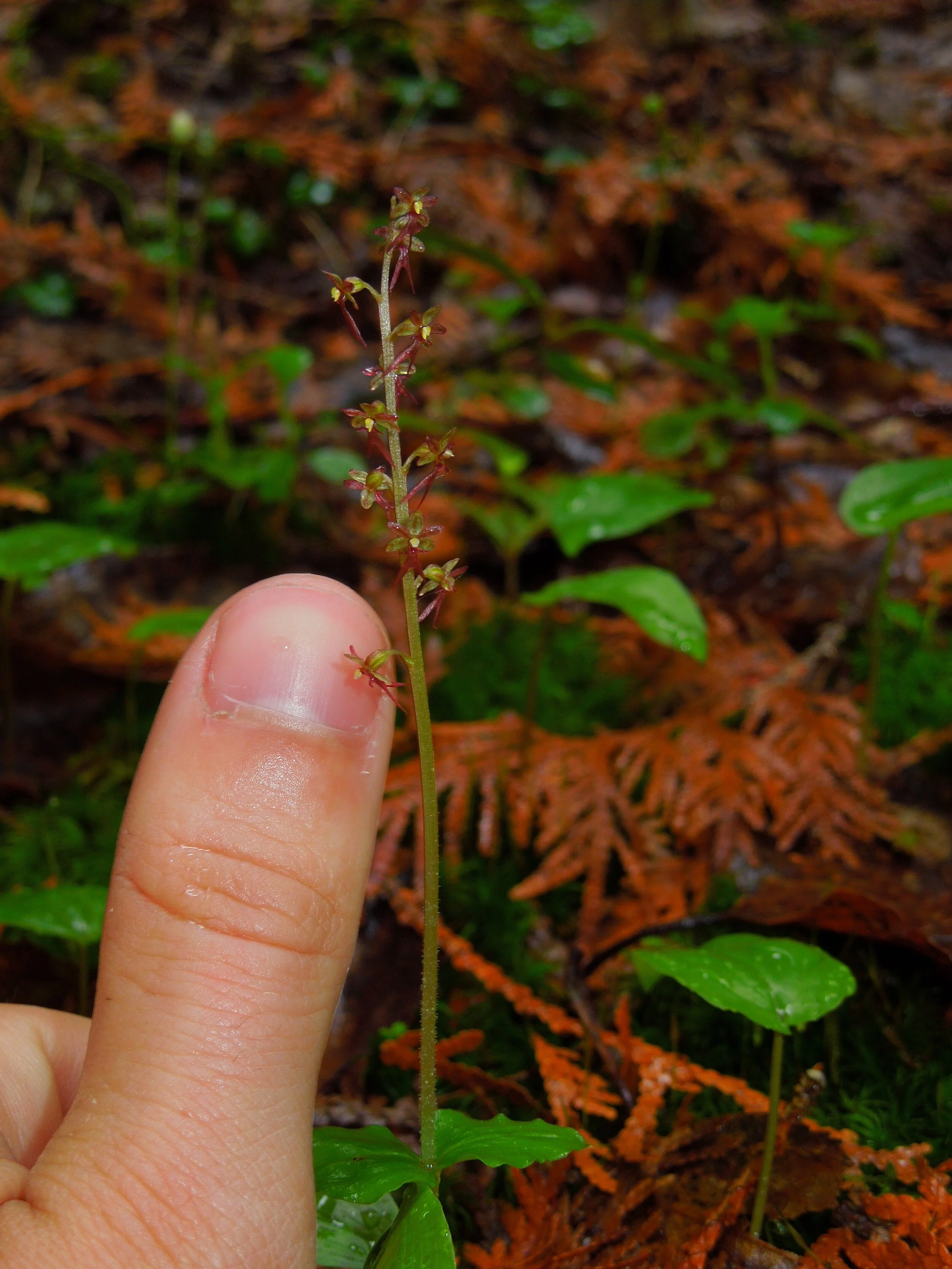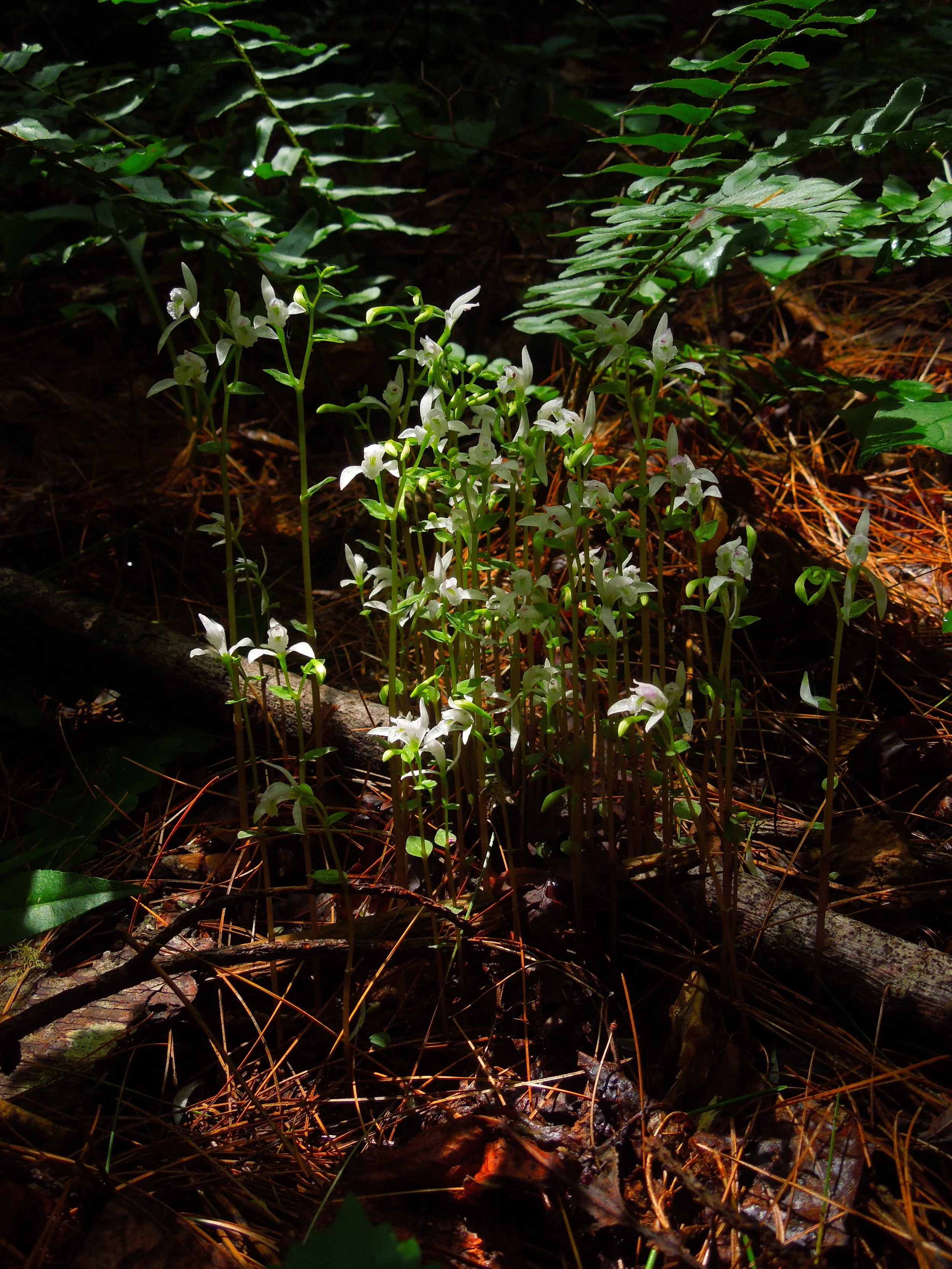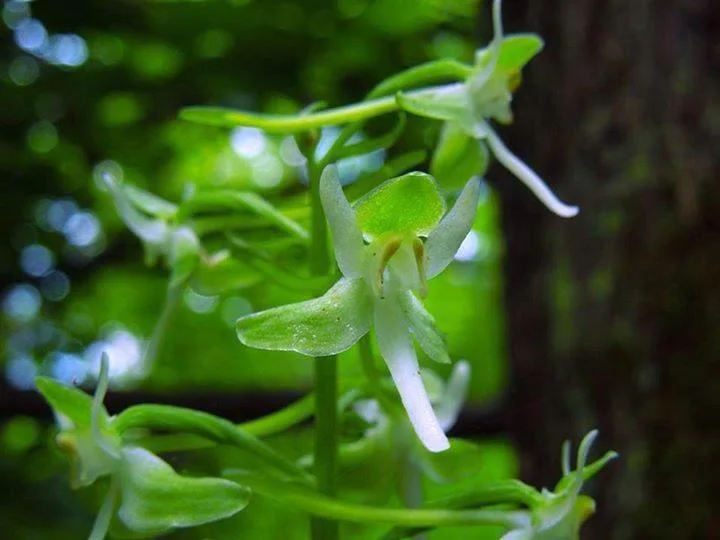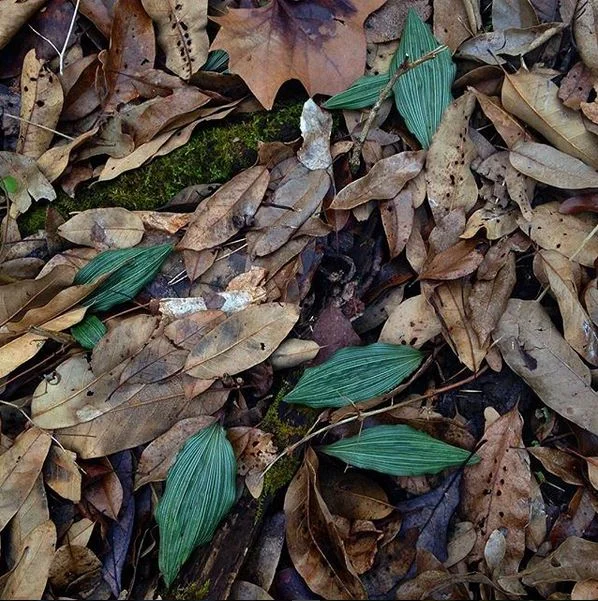Photo by Cptcv licensed under CC BY-ND 2.0.
The heartleaf twayblade is truly a sight for sore eyes.... that is, if you can find it. This diminutive orchid stands no more than 30 cm tall when in bloom and, for much of its life, exists as a single pair of tiny, heart-shaped leaves. Finding this species in bloom has been one of the major highlights of the last few years of botanizing. Getting to see it up close makes me wonder how many times I may have passed it over completely.
A closeup examination of the flowers will reveal what looks like tiny little humanoids. Indeed, the flowers are complex little structures. Tiny trigger hairs located at the base of the pollinia squirt glue on the back of visiting insects, which affixes the pollen sacs or pollinia. One to two days after the pollinia have been removed the stigmas become receptive to pollen. Though this orchid can self fertilize, differential ripening of sexual parts like this helps ensure cross pollination between different individuals.
With flowers so small, it is a wonder that insects can even find them. As it turns out, the flowers emit a foul smelling odor, though one would be hard pressed to detect it having to bend down so close to the forest floor. This attracts a wide variety of small insects like wasps and flies. The most common visitors, however, are fungus gnats. Ever abundant in the moist duff of the forest, these tiny dipterids offer plenty of opportunity for pollination. The orchid even sweetens the deal a bit by producing a small amount of nectar.
Being so small it is quite easy to overlook this plant. One must put in a bit of searching to find them. Their tiny size also means that they are often under-represented in conservation efforts as well. Entire populations can exist in only a few square meters of forest and thus are quite sensitive to disturbance. Timber harvesting and sprawl represent the largest threats the this species but luckily it has a surprisingly large geographic distribution. Still, keep an eye out for this lovely little species. They may be hard to find but they are well worth the effort!
Photo Credit: [1]












